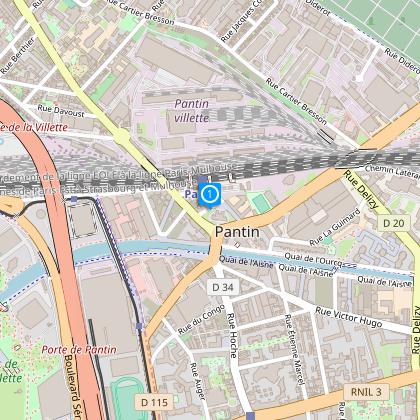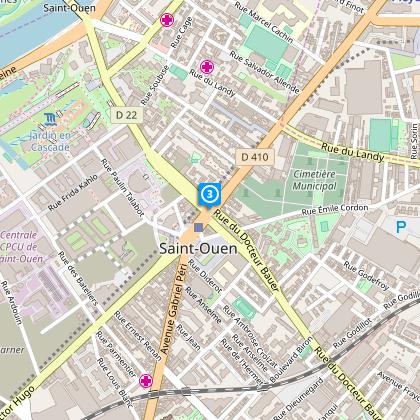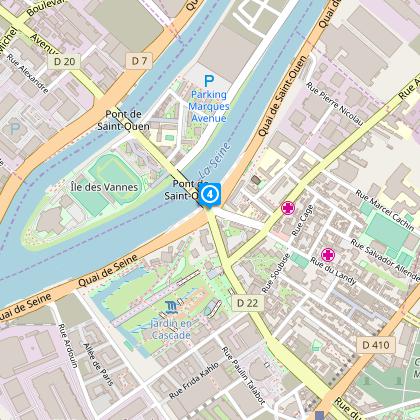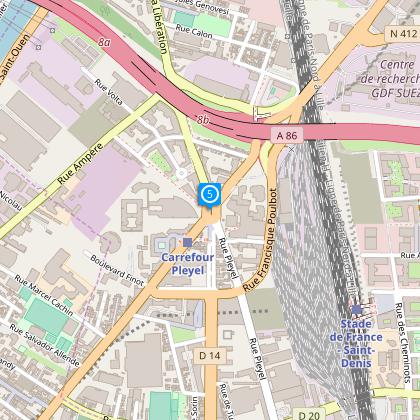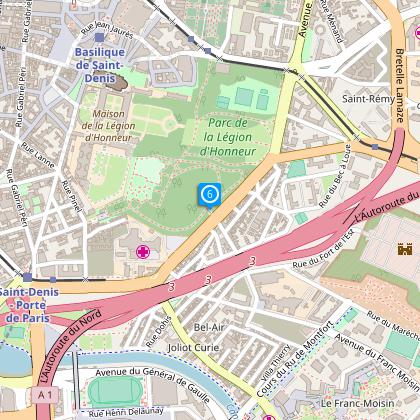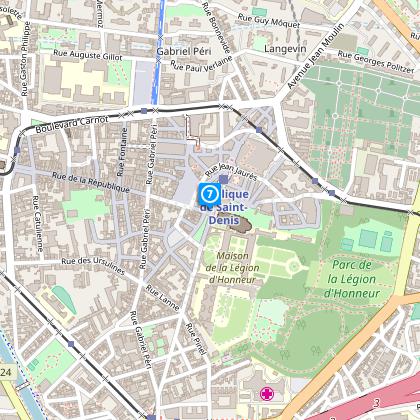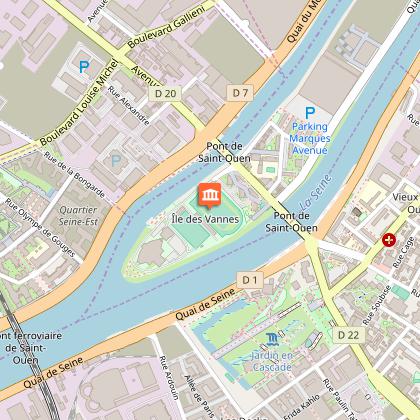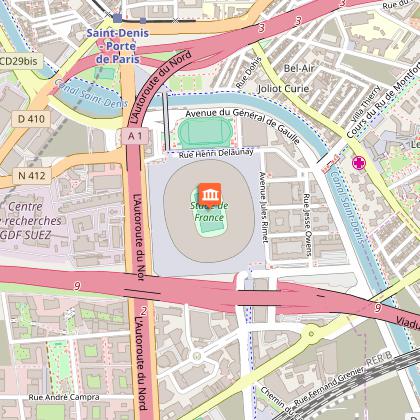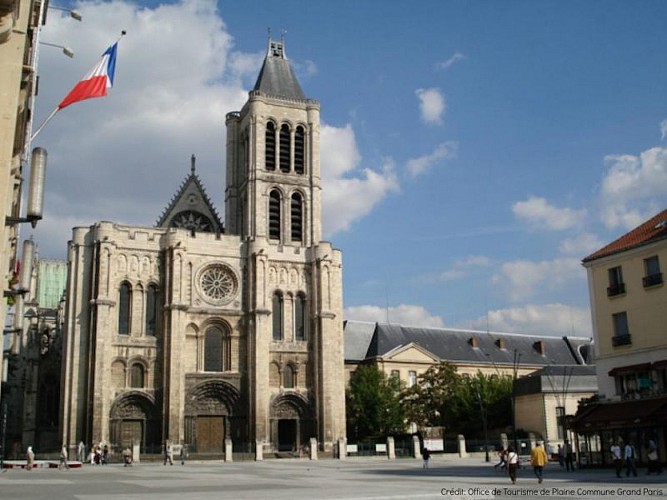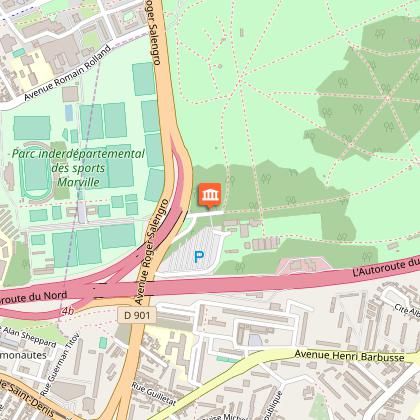Allarme
Allarmi
Tipo di pratica
A piedi
Facile
6h
Presentazione
Descrizione
Mappa
Tappe
Punti di interesse
Sintesi di Cirkwi
Valutazioni e recensioni
Vedi nei dintorni
24 Km per l'edizione 2024 2018
Il breve di Cirkwi
Esperienza Parigi 2024 siti olimpici a piedi: un viaggio culturale
Imbarcandosi in questa passeggiata meticolosamente curata da FFRandonnée Seine-Saint-Denis, si scoprono non solo le future sedi delle Olimpiadi di Parigi 2024, ma si unisce insieme un vibrante mosaico di meraviglie culturali e architettoniche lungo la Seine-Saint-Denis. Coprendo varie distanze, invita gli appassionati a percorrere le strade storiche, lungo il Canal Saint-Denis, ed esplorare il notevole panorama urbano di Street Art Avenue. Questo viaggio va oltre una semplice passeggiata; è una storia immersiva narrata attraverso le strade di Saint-Denis, l'iconica Ile de Vannes e la splendida bellezza del Parc départemental Georges-Valbon, mentre si crea un legame con lo spirito atletico delle future Olimpiadi.
Breve valutazione tecnica per gli appassionati
Con una distanza totale di 24,049 km, comprendente una quota minima di 24 metri e raggiungendo un picco di 56 metri, il percorso presenta un terreno moderatamente sfidante con un dislivello positivo totale compreso tra 32 e 49 metri. Strutturato in modo adeguato per una varietà di partecipanti, la flessibilità del percorso in termini di distanza, offrendo opzioni di 10 km, 15 km, 18 km e l'intero percorso di 24 km, si adatta a camminatori di tutti i livelli di forma fisica, garantendo al contempo un'esperienza completa dei luoghi che saranno fondamentali durante le Olimpiadi di Parigi 2024.
Suggerimenti per la visita stagionale e sicurezza
Indipendentemente dalla stagione, essere preparati migliora l'esperienza su questo percorso diversificato. In primavera e autunno, l'abbigliamento a strati è essenziale a causa delle condizioni meteorologiche variabili. In estate è necessario utilizzare creme solari, cappelli e abbondante acqua per rimanere idratati sotto il sole. Gli inverni, anche se miti, richiedono abbigliamento caldo. Tieni sempre a portata di mano una mappa e assicurati che il telefono sia carico per eventuali emergenze. Inoltre, rimanere sui sentieri segnalati è fondamentale per la sicurezza e per preservare gli ambienti naturali e urbani che esplorerai. Verifica gli avvisi locali per eventuali restrizioni temporanee o eventi che potrebbero influire sull'accessibilità.
Il polso di Seine-Saint-Denis: una visione storica
Seine-Saint-Denis vanta un ricco intreccio di storia e cultura, che si fonde senza soluzione di continuità con la sua importanza contemporanea come sede delle imminenti Olimpiadi di Parigi 2024. Dalle sue origini come polo industriale cruciale fino a diventare un melting pot di innovazione artistica e architettonica, questo dipartimento è sempre stato all'avanguardia del progresso. Il simbolico Canal Saint-Denis e la meraviglia architettonica del complesso sportivo Ile de Vannes si ergono come testimoni dell'eredità della regione e della sua continua evoluzione in una comunità vivace, che risuona con lo spirito energetico che rappresentano le Olimpiadi.
Panoramica sul clima e i migliori periodi di visita
Seine-Saint-Denis gode di un clima temperato, con inverni miti ed estati calde. Le precipitazioni sono distribuite in modo uniforme durante tutto l'anno, rendendo qualsiasi stagione adatta per una visita. Tuttavia, per un'esperienza di camminata più confortevole, la fine della primavera all'inizio dell'estate (maggio-giugno) e l'inizio dell'autunno (settembre-ottobre) sono ideali. In questi periodi le temperature sono piacevoli e ci sono meno piogge, aumentando il piacere delle attività all'aperto e dell'esplorazione dei siti olimpici e del ricco patrimonio culturale della regione.
Imbarcandosi in questa passeggiata meticolosamente curata da FFRandonnée Seine-Saint-Denis, si scoprono non solo le future sedi delle Olimpiadi di Parigi 2024, ma si unisce insieme un vibrante mosaico di meraviglie culturali e architettoniche lungo la Seine-Saint-Denis. Coprendo varie distanze, invita gli appassionati a percorrere le strade storiche, lungo il Canal Saint-Denis, ed esplorare il notevole panorama urbano di Street Art Avenue. Questo viaggio va oltre una semplice passeggiata; è una storia immersiva narrata attraverso le strade di Saint-Denis, l'iconica Ile de Vannes e la splendida bellezza del Parc départemental Georges-Valbon, mentre si crea un legame con lo spirito atletico delle future Olimpiadi.
Breve valutazione tecnica per gli appassionati
Con una distanza totale di 24,049 km, comprendente una quota minima di 24 metri e raggiungendo un picco di 56 metri, il percorso presenta un terreno moderatamente sfidante con un dislivello positivo totale compreso tra 32 e 49 metri. Strutturato in modo adeguato per una varietà di partecipanti, la flessibilità del percorso in termini di distanza, offrendo opzioni di 10 km, 15 km, 18 km e l'intero percorso di 24 km, si adatta a camminatori di tutti i livelli di forma fisica, garantendo al contempo un'esperienza completa dei luoghi che saranno fondamentali durante le Olimpiadi di Parigi 2024.
Suggerimenti per la visita stagionale e sicurezza
Indipendentemente dalla stagione, essere preparati migliora l'esperienza su questo percorso diversificato. In primavera e autunno, l'abbigliamento a strati è essenziale a causa delle condizioni meteorologiche variabili. In estate è necessario utilizzare creme solari, cappelli e abbondante acqua per rimanere idratati sotto il sole. Gli inverni, anche se miti, richiedono abbigliamento caldo. Tieni sempre a portata di mano una mappa e assicurati che il telefono sia carico per eventuali emergenze. Inoltre, rimanere sui sentieri segnalati è fondamentale per la sicurezza e per preservare gli ambienti naturali e urbani che esplorerai. Verifica gli avvisi locali per eventuali restrizioni temporanee o eventi che potrebbero influire sull'accessibilità.
Il polso di Seine-Saint-Denis: una visione storica
Seine-Saint-Denis vanta un ricco intreccio di storia e cultura, che si fonde senza soluzione di continuità con la sua importanza contemporanea come sede delle imminenti Olimpiadi di Parigi 2024. Dalle sue origini come polo industriale cruciale fino a diventare un melting pot di innovazione artistica e architettonica, questo dipartimento è sempre stato all'avanguardia del progresso. Il simbolico Canal Saint-Denis e la meraviglia architettonica del complesso sportivo Ile de Vannes si ergono come testimoni dell'eredità della regione e della sua continua evoluzione in una comunità vivace, che risuona con lo spirito energetico che rappresentano le Olimpiadi.
Panoramica sul clima e i migliori periodi di visita
Seine-Saint-Denis gode di un clima temperato, con inverni miti ed estati calde. Le precipitazioni sono distribuite in modo uniforme durante tutto l'anno, rendendo qualsiasi stagione adatta per una visita. Tuttavia, per un'esperienza di camminata più confortevole, la fine della primavera all'inizio dell'estate (maggio-giugno) e l'inizio dell'autunno (settembre-ottobre) sono ideali. In questi periodi le temperature sono piacevoli e ci sono meno piogge, aumentando il piacere delle attività all'aperto e dell'esplorazione dei siti olimpici e del ricco patrimonio culturale della regione.
Generato automaticamente.
IGN Carte
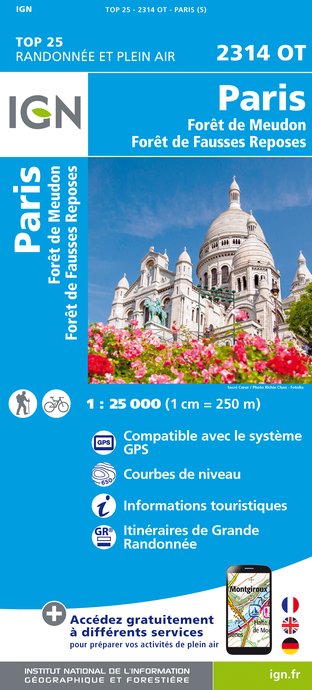
2314OT - PARIS FORÊT DE MEUDON FORÊT DE FAUSSES REPOSES
Editore : IGN
Collezione : TOP 25 ET SÉRIE BLEUE
Scala : 1:25 000
13.90€

190 PARIS CHANTILLY FONTAINEBLEAU
Editore : IGN
Collezione : TOP 100
Scala : 1:100 000
8.40€
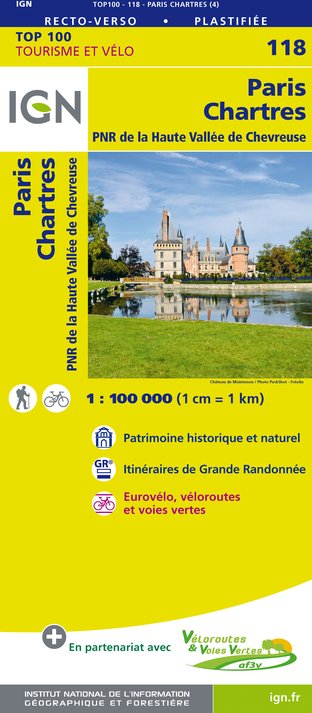
118 PARIS CHARTRES PNR DE LA HAUTE VALLÉE DE CHEVREUSE
Editore : IGN
Collezione : TOP 100
Scala : 1:100 000
8.40€

108 PARIS ROUEN BEAUVAIS PNR DU VEXIN FRANÇAIS
Editore : IGN
Collezione : TOP 100
Scala : 1:100 000
8.40€
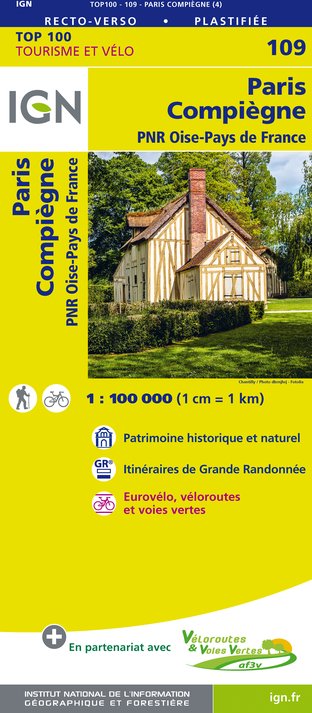
109 PARIS COMPIÈGNE PNR OISE-PAYS DE FRANCE
Editore : IGN
Collezione : TOP 100
Scala : 1:100 000
8.40€

D75-95 ÎLE-DE-FRANCE OUEST
Editore : IGN
Collezione : CARTES DÉPARTEMENTALES IGN
Scala : 1:150 000
5.90€

D77 SEINE-ET-MARNE
Editore : IGN
Collezione : CARTES DÉPARTEMENTALES IGN
Scala : 1:150 000
5.90€
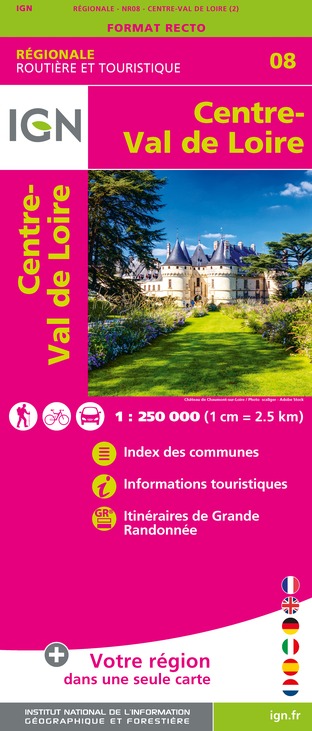
NR08 CENTRE-VAL DE LOIRE
Editore : IGN
Collezione : CARTES RÉGIONALES IGN
Scala : 1:250 000
6.80€

NR03 ÍLE DE FRANCE
Editore : IGN
Collezione : CARTES RÉGIONALES IGN
Scala : 1:250 000
6.80€

NR01 HAUTS-DE-FRANCE
Editore : IGN
Collezione : CARTES RÉGIONALES IGN
Scala : 1:250 000
6.80€
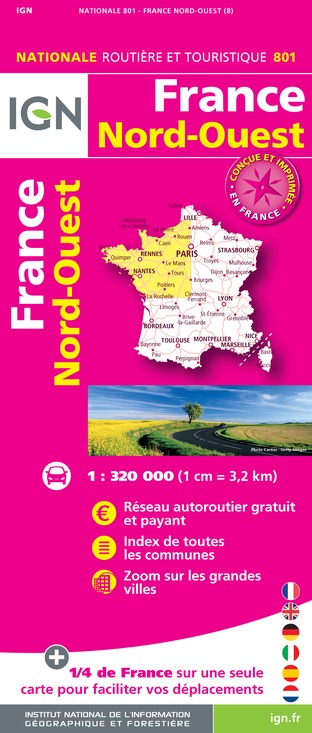
801 FRANCE NORD OUEST
Editore : IGN
Collezione : CARTES NATIONALES IGN
Scala : 1:320 000
6.10€

EUROPE
Editore : IGN
Collezione : DÉCOUVERTE DES PAYS DU MONDE IGN
Scala : 1:2 500 000
7.00€
Informazioni tecniche
A piedi
Difficoltà
Facile
Durata
6h
(1g)
Dist.
24 km
Tipo di pratica
A piedi
Facile
6h
Mostra di più
Profilo altimetrico
Punto di partenza
2
Place du Président Salvador Allende
,
93500
Pantin
Lat : 48.89711Lng : 2.40083
Tappe
Punti di interesse
Autore dei dati

proposto da
CDRP 93
1Ter Place des martyrs de la Résistance et de la Déportation 93110 Rosny-sous-Bois France
Valutazioni e recensioni
Da vedere nei dintorni
